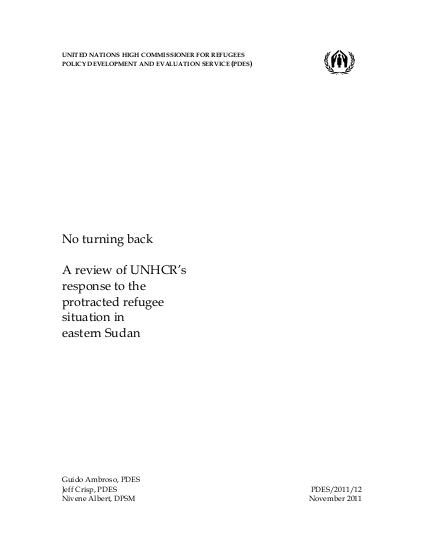
Eastern Sudan has hosted refugees from neighbouring Eritrea since the late 1960s, making this refugee situation one of the most protracted in the world. Peaking at around 800,000 in 1990, the refugee population currently stands in the region of 80,000, the majority of them living in camps. As in many protracted refugee situations, UNHCR’s room for manoeuvre in eastern Sudan is very limited. The Eritreans are not prepared to repatriate in view of the human rights situation in Eritrea and their opposition to the country’s government. While there is a growing interest in resettlement, few of the refugees have access to this solution. In such circumstances, the only viable solution is that of local integration. And in that respect, the environment is in several respects a favourable one. Most of the refugees who arrived before 2001 have the same ethnicity, language, culture and religion as their Sudanese hosts. Many were born or brought up in Sudan and consider it to be their home. While the refugees continue to be assisted by UNHCR, food distribution has been reduced and many refugees appear to have found a way of sustaining themselves, often by means of agriculture or informal labour. Some have even managed to acquire Sudanese identity documents.
